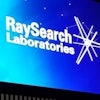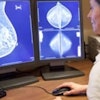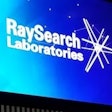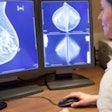
The strong performance of Sectra in the global imaging IT market has attracted much attention over the past year or so. Following the latest set of positive financials for the Swedish company, it's a good time to take a fresh look at the core aspects of its strategy, the outlook for the company, and the challenges it faces.
Sectra's recent reported financials (Q4 18/19 in May 2019, Q1 19/20 in September 2019) have continued to show strong performance. Sales revenue for imaging IT grew 16.7% annually, with order intake spiking in Q4 18/19. This is impressive considering the global market for imaging IT only grew 0.7% from 2017 to 2018.
The following are three key components of the firm's strategy:
- Focus on a common imaging IT platform, user interface, storage, and workflow across all applications.
- Use of deployments in Scandinavian academic health providers as blueprint for other large enterprise deployments in radiology and pathology.
- Selective targeting of geographic business expansion -- namely the Nordic region, the Netherlands, the U.K., Australia, and the U.S.
This approach continues to bear fruit for the firm with marquee customer announcements in several of these geographies in the last year, especially New South Wales (NSW) Health (Australia), Vanderbilt Health (U.S.), Deventer Hospital (the Netherlands), and Southern Denmark Health Region (Nordic region). These recent gains have come about for different reasons but can be unified into three main brackets of customer focus: centralizing radiology IT across the enterprise (enterprise radiology strategy), digitalization of pathology, and managing all clinical diagnostic content (radiology, cardiology, and pathology) on a single platform (enterprise imaging strategy).
 Stephen Holloway.
Stephen Holloway.Arguably, Sectra has been able to capitalize on all three of these trends. As one of the earlier vendors to adopt a centralized platform-based approach to imaging IT, the firm can compete in enterprise radiology deals and increasingly, "multi-ology" enterprise imaging deals. Moreover, it was one of the few imaging IT vendors that developed its platform to support digital pathology. This has created opportunities.
Some of its peers in radiology IT have been slower to integrate their portfolios into a platform-based product, relying instead on portfolios combining legacy platforms and modules from an array of acquisitions and partnerships, often resulting in interoperability challenges and lengthy implementations.
Customers focused on pursuing enterprise radiology or enterprise imaging strategies have therefore started to look elsewhere beyond incumbent PACS vendors such as Fujifilm Medical, Agfa Healthcare, GE Healthcare, and IBM (Merge). Sectra is one of the leading "challengers," along with Intelerad, Visage Imaging, and Carestream, whose IT division was acquired earlier in 2019 by Philips Healthcare. In general, all these challengers have targeted a few key competencies in their portfolio: interoperability, modularity, agnostic content, data management, and the growing importance of workflow to customers.
Mamma Mia!
Graduating from being a relatively small specialist imaging IT vendor to taking on larger enterprise deals and marquee clients does have its challenges, however. The recent Q1 19/20 results reflect this; operating profit and cash flow both took big hits as Sectra invests in resources to support deployments after a surge of orders.
In the U.S., the type of customer Sectra is selling to is changing; its recent deals with larger health providers, often complex customers with greater demands in terms of onsite support and implementation services, can stretch operational resources. This carries some risk for smaller firms such as Sectra as large deals often have unforeseen complexities and overruns in terms of implementation.
Its latest spending spree on operational support is of course necessary, but also highlights that the Swedish firm now faces many of the challenges its incumbent competitors commonly confront in the higher-stake large-hospital market; most of its incumbent peers also have far deeper pockets operationally to deal with limited cash flow and operational overhead too.
That said, Sectra does have a track record of deployment at larger health provider networks internationally, both in the Nordic region, the Netherlands, and Australia. If it can replicate these successes in the highly competitive U.S. market, it will increasingly feature as a leading competitor in other large, U.S. hospital deals.
When all is said and done
From a longer-term strategic perspective, Sectra will also continue to be challenged by the growing shift in healthcare provider procurement to simplify supply chains, opting for larger multifaceted contracts with a few central vendor partners.
In imaging IT, there is already increasing use of managed service contracts, both in terms of operational budgeting, but also to bundle products and services together and "lock-out" competition. Some vendors are more advanced than others, but we have already observed evidence of imaging IT, imaging modality hardware, and clinical care devices and IT being offered as long-term deals.
We also see the potential for core imaging IT platform vendors to act as curators for the growing array of machine-learning tools by contracting in tools on behalf of their health provider customers. If this trend continues, this will place increasing competitive advantage to the largest healthcare technology vendors with expansive portfolios.
 Sectra's booth at RSNA 2018.
Sectra's booth at RSNA 2018.In our last commentary on Sectra a year ago, we noted that "Sectra, as a relatively small vendor, will find the more expansive portfolios and resources of the bigger healthtech vendors will increasingly suit the demands of health providers over the coming decade. This threat will probably require a shift in strategy toward a more best-of-breed capability, perhaps around integration and workflow for digital pathology into broader imaging, a market Sectra is making significant progress in and well ahead of the curve."
Considering the market evidence since we wrote this, there has been little change in the trend toward larger, centralized contracting. However, over this period Sectra has continued to also advance its business as a centralized imaging IT platform provider with larger customers. It has done so by being smart in its selection of tools and partnerships, walking a tightrope of partnering for complex specialty niche tools while investing most of its R&D on usability, workflow, and implementation. It has also reaped the rewards of its development work in platform integration and digital pathology agnosticism.
Novel approach to pathology
In pathology, Sectra has also played a different role than some of its peers. Rather than buying or self-developing its own hardware, it has developed its core imaging IT platform to handle digital pathology data from a variety of proprietary scanner types, essentially creating a "hardware agnostic" platform. Considering pathology remains a nonstandardized market with an array of proprietary scanners and software, this approach has resonated with healthcare providers increasingly frustrated by vendor "lock-in."
The firm is also finding cross-sell opportunities. By selling digital pathology to its radiology IT customer base and vice-versa, it has been able to win over new clients or extend and add to existing customer contracts. This has been a relatively slow play in the last few years as digital pathology has been slowly coming of age, restrained by legislative challenges, a lack of harmonized standards, and limited appetite from pathologists and health providers.
However, digital pathology is increasingly on the agenda of new tenders for enterprise imaging deals, putting the Swedish firm in a position to capitalize. Moreover, long-term partnerships with some leading European hospitals in digitalization of pathology have provided a variety of working reference sites for its approach.
The speed and scale of digital pathology adoption will also factor in its potential success; dedicated digital pathology software accounts for approximately 117 million euros of global sales today and has been sluggish in its adoption (projected compound annual growth rate is only 16% for the period 2018 to 2022).
This market also remains dwarfed in comparison with radiology and cardiology IT, accounting for just 4.2% of global revenues in 2018; while still early in its development, few industry experts would be willing to suggest it will reach the same scale as radiology IT.
Knowing me, knowing you
How long the Swedish firm can remain on this upward trajectory is difficult to predict. It will, in part, come down to how quickly the larger healthtech vendors react in terms of centralizing platforms and targeting workflow and interoperability, a trend we are already observing. It will also depend on health providers' internal decision-making with regards to bundled procurement and long-term spending plans. If more onus is placed on the cost-effectiveness of bundled deals from larger healthtech vendors, smaller firms will struggle.
Ultimately it will come down to how well Sectra can continue to navigate the increasingly competitive and consolidating imaging IT marketplace. Its initial long-term bets on imaging IT platforms and digital pathology are already paying off. How it manages its next stage of growth and arrival in the "big leagues," treading a tightrope of expansion, product development, and commercial results will have a big bearing on its future in the market.
At this stage though, our past conclusion still rings true:
"Yet, when all is said and done, it's hard to not be impressed by the recent performance of a Swedish minnow up against some of the largest healthtech vendors on the planet."
Stephen Holloway is principal analyst and company director at Signify Research, a health tech, market-intelligence firm based in Cranfield, U.K. He can be reached at [email protected].
The comments and observations expressed herein do not necessarily reflect the opinions of AuntMinnieEurope.com, nor should they be construed as an endorsement or admonishment of any particular vendor, analyst, industry consultant, or consulting group.



















